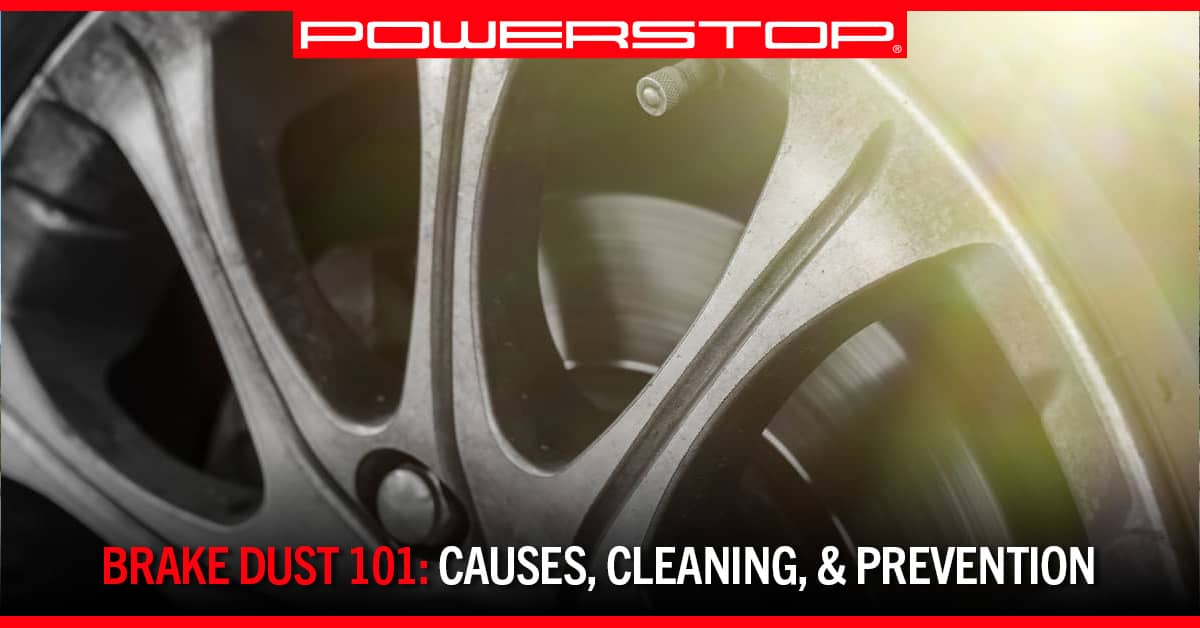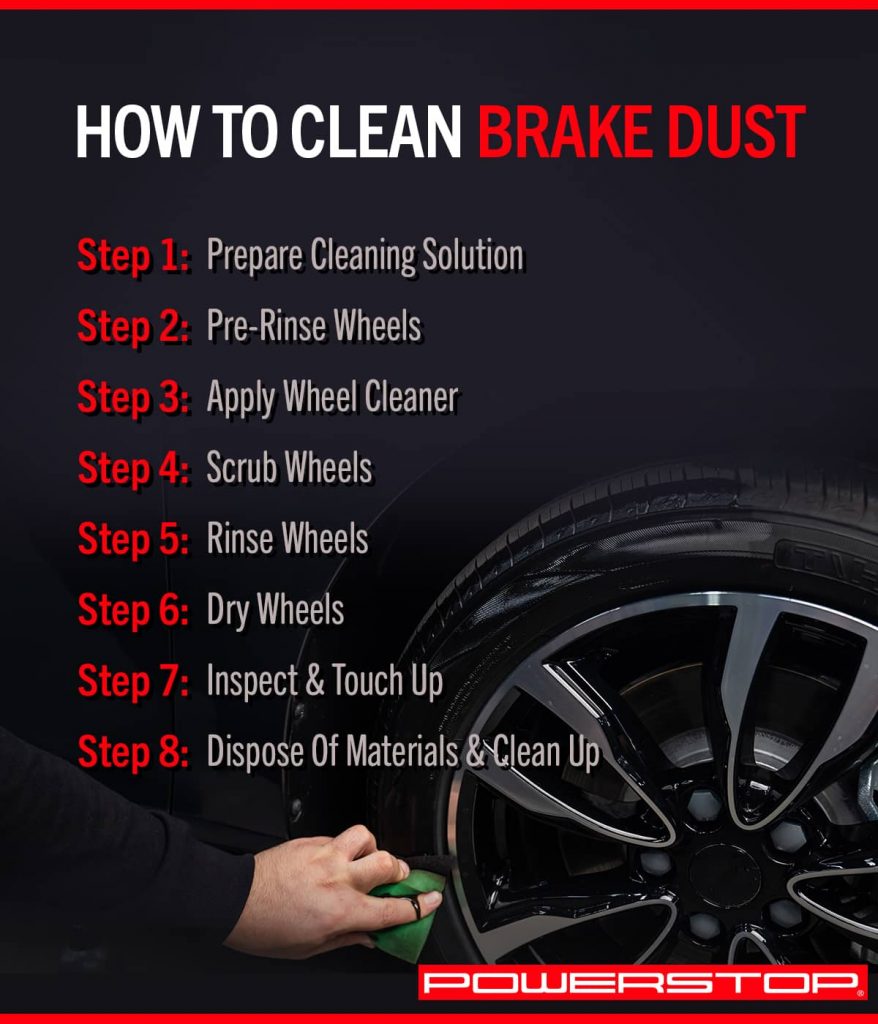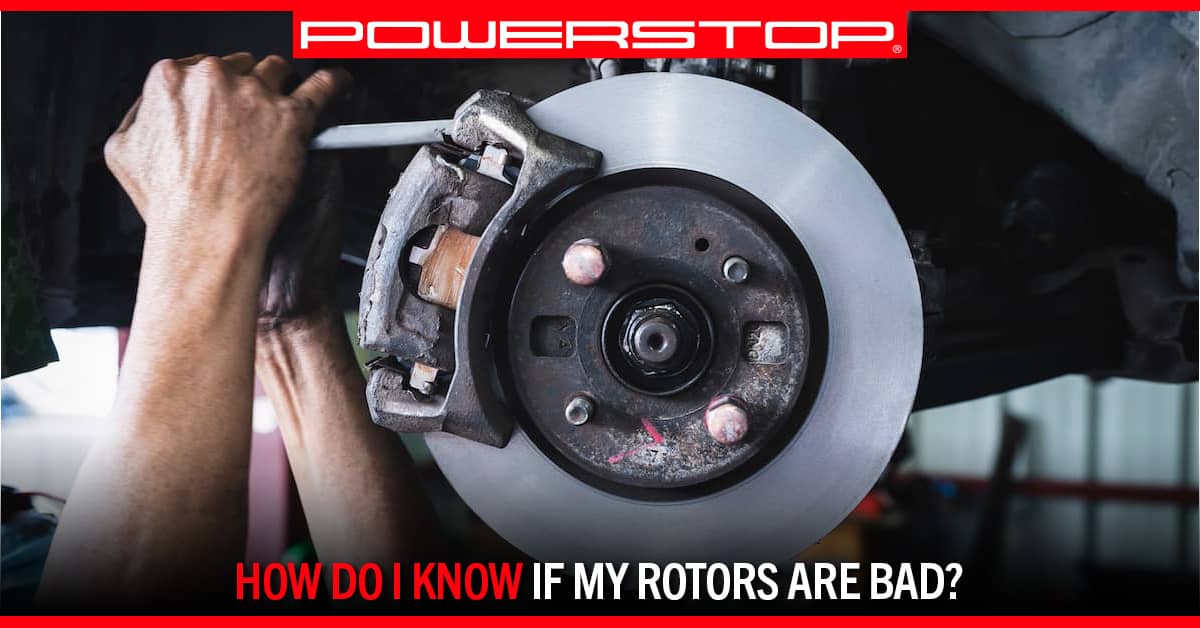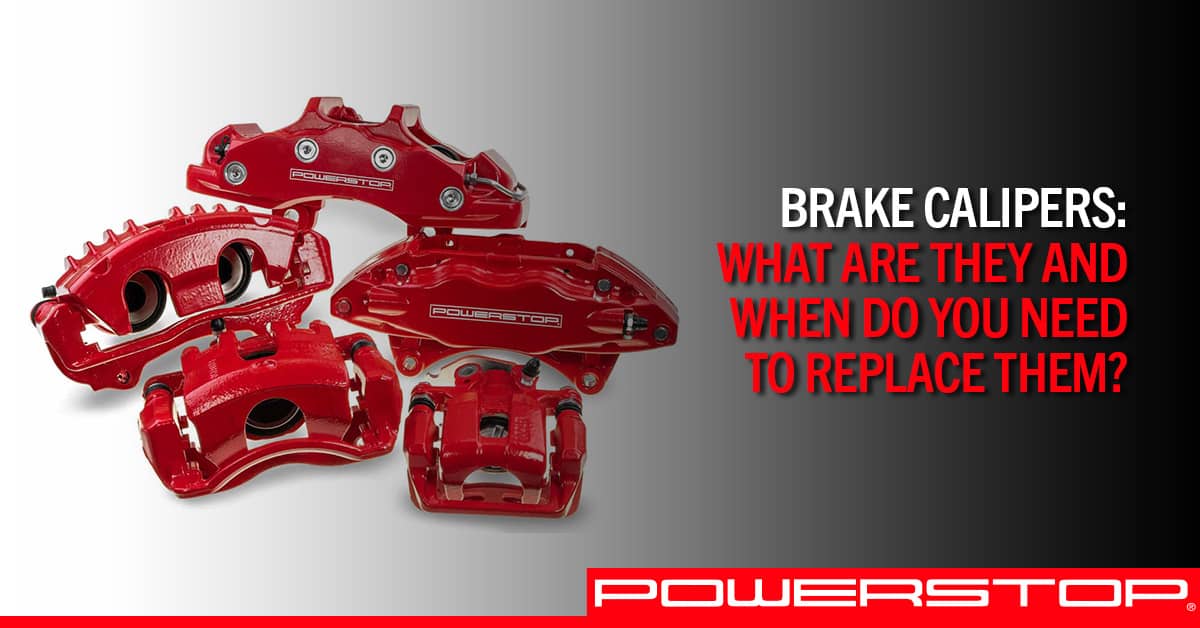
Brake Dust 101: Causes, Cleaning, & Prevention
Brake dust silently accumulates on wheels and nearby surfaces, defacing their appearance. Understanding the origins, implications, and solutions for brake dust is crucial for maintaining both the looks and performance of your vehicle.
As the brakes engage and disengage during normal operation, small metal particles shed from brake pads and rotors to form this dark residue.
Preventing brake dust is a cornerstone of PowerStop’s commitment to its customers. Our comprehensive line of carbon-fiber ceramic brake pads is specially formulated for less brake dust and provides clean, severe-duty stopping power for nearly every vehicle on the road.
Below, we explore what brake dust is, why it’s a problem, and how you can avoid it.
Understanding Brake Dust: Causes, Cleaning, and Prevention
What Is Brake Dust?
Brake dust is a fine powder that forms on the surface of brake components, such as brake pads and brake rotors, as they wear down during normal operation. It consists primarily of tiny metal particles from the brake pads and rotor material, as well as other debris from the road surface. Brake dust can accumulate on wheels and other nearby surfaces, often appearing as a dark gray or black residue. It is a natural byproduct of the friction generated when brakes are applied and is typically harmless, although it can be unsightly and difficult to clean.
What Causes Brake Dust?
Brake dust is primarily caused by the wear and tear of brake components during the braking process. When you apply the brakes, the brake pads press against the brake rotors to create friction, which slows down or stops the vehicle. This friction generates heat and wears down the brake pads and rotors over time. As the brake pads wear down, tiny metal particles are released into the air as dust.
Some of the main causes of brake dust include:
- Friction during braking: When you apply the brakes, the brake pads press against the brake rotors to create friction.
- Wear and tear: The friction generated during braking causes gradual wear and tear on the brake pads and rotors.
- Metal particles: As the brake pads wear down, tiny metal particles are released into the air as dust.
- Composition of brake pads: The composition of the brake pads, which often includes materials like metal, ceramic, or organic compounds, can influence the amount and type of dust produced. Ceramic brake pads, like those offered by PowerStop, produce less visible brake dust than metallic or semi-metallic pads.
- Driving conditions: Factors such as driving style, frequency of braking, and road conditions can also affect the amount of brake dust produced. For example, frequent braking or driving in stop-and-go traffic can accelerate brake pad wear and increase dust production.
Should You Clean Brake Dust?
Yes! Cleaning brake dust is important to maintain the aesthetic appeal of your vehicle. Brake dust buildup can make your wheels and surrounding areas look unsightly. Regular cleaning helps maintain the appearance of your vehicle, keeping it looking clean and well-maintained.

How to Clean Brake Dust: Step-by-Step
It is not necessarily difficult to clean brake dust, but if brake dust has accumulated for a substantial period of time, you may need a wheel cleaner. Below are eight simple steps to clean brake dust.
Before You Begin
Before getting started with the cleaning process, ensure the wheels are cool to the touch. Use water to rinse away any grime or grit on the rims to prevent damage to the wheels when scrubbing.
Step 1: Prepare Cleaning Solution
Dilute the wheel cleaner according to the manufacturer’s instructions in a bucket of water.
Step 2: Pre-Rinse Wheels
Use a hose or pressure washer to pre-rinse the wheels thoroughly. This helps loosen any loose dirt and brake dust, making the cleaning process more effective.
Step 3: Apply Wheel Cleaner
Spray the diluted wheel cleaner generously onto the wheels, ensuring thorough coverage of all surfaces affected by brake dust. Wait about a minute to allow the wheel cleaner to reach all the nooks and crevices of the wheel as these are the areas where dust tends to accumulate.
Because different wheels have different finishes and coatings, make sure to use the right wheel cleaning solution. Using harsh chemicals to remove dirt from your wheels can risk damaging the protective covering.
Step 4: Scrub Wheels
Clean the wheel’s surface thoroughly using a gentle bristle brush, ensuring it reaches all the intricate, recessed areas. Divide the task into small sections and employ a back-and-forth movement to remove stubborn brake dust particles effectively.
Step 5: Rinse Wheels
After completing the brushing process for the entire wheel, promptly rinse it off. Thoroughly rinse the wheels with fresh water using either a hose or a pressure washer to eliminate the loosened brake dust and cleaning solution.
*Note: Brake dust and any cleaning water should be collected and disposed of in accordance with federal and local law.
Step 6: Dry Wheels
After rinsing the wheel, dry it immediately using a microfiber towel to prevent water spots and streaks.
Step 7: Inspect and Touch Up
After the wheels are dry, inspect them closely to ensure all brake dust and dirt have been removed. If any areas require additional cleaning, repeat the process as necessary.
Step 8: Dispose of Materials and Clean Up
Dispose of any used cleaning materials properly and clean up the surrounding area to prevent any potential environmental hazards.
How to Prevent Brake Dust
Here are some tips to help prevent brake dust buildup on your wheels:
- Choose Ceramic Brake Pads: Ceramic brake pads are known for producing less visible brake dust compared to metallic or semi-metallic pads. Consider switching to ceramic brake pads if reducing brake dust is a priority for you.
- Avoid Heavy Braking: Excessive or aggressive braking can accelerate brake pad wear and increase brake dust production. Whenever possible, try to anticipate stops and apply gradual, smooth braking to reduce wear and dust buildup.
- Keep Brake Components Clean: Regularly clean and maintain your brake components, including calipers, rotors, and pads. Removing built-up brake dust and debris from these components can help prevent excessive dust from accumulating on your wheels.
- Proper Wheel Cleaning: Clean your wheels regularly using a wheel cleaner specifically designed to remove brake dust. Avoid using harsh chemicals or abrasive cleaners that can damage the wheels’ finish.
- Consider Wheel Coatings: Apply a ceramic wheel coating or sealant to your wheels to create a protective barrier that repels brake dust and makes cleaning easier.
- Professional Inspection and Maintenance: Periodically have your brakes inspected and serviced by a professional mechanic to ensure they are functioning optimally and to address any issues that may contribute to excessive brake dust buildup.
By following these tips, you can help reduce brake dust accumulation on your wheels and keep them looking cleaner for longer periods.
Say Goodbye to Nasty Brake Dust. PowerStop Carbon-Fiber Brake Pads Provide Reliable Low-Dust Performance!
While a small amount of brake pad dust is normal, excessive amounts can indicate an issue. PowerStop’s low-dust brake pads, made with a carbon fiber and ceramic formula, maximize stopping power and keep your wheels clean.
Whether you need severe-duty stopping power for your car, truck, SUV, Jeep, muscle car, or other vehicle, PowerStop is committed to providing a top-quality, dust-free braking experience for nearly every vehicle on the road.
Some of PowerStop’s Low-Dust, High-Performance brake pads include:
Z36 Truck & Tow Carbon-Fiber Ceramic Brake Pads
The ideal towing, off-road, and hauling upgrade for trucks and SUVs that go offroad or tow or haul at least once a year.
Z23 Evolution Sport Carbon-Fiber Brake Pads
The perfect option for the daily drivers who want to upgrade the stopping power of their car, truck, or SUV.
Z26 Street Performance Carbon-Fiber Ceramic Brake Pads
A dependable brake upgrade for muscle cars and high-performance, high-horsepower vehicles.
Z17 Evolution Ceramic Brake Pads
Low-dust stock replacement for cars, trucks, and SUVs.
Have A Question? Powerstop Can Help
PowerStop is dedicated to delivering top-quality performance brakes for nearly every vehicle on the road. If you have a question about any of our products, contact us today online at CustomerService@PowerStop.com or toll-free at (888) 863-4415. Our customer service team is available to answer your questions Monday through Friday from 8 a.m. to 5 p.m. (CST). Se habla español.
Back



